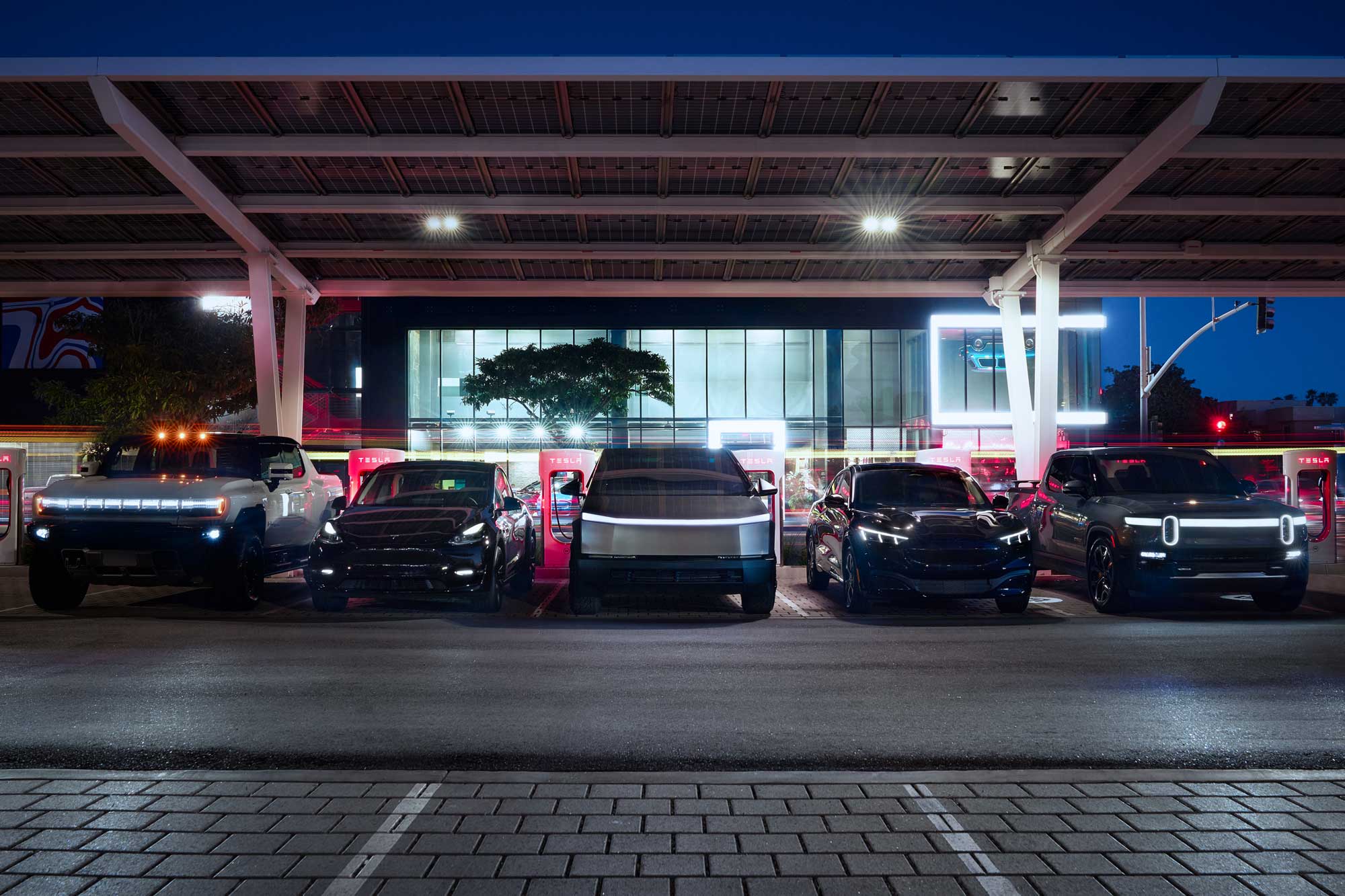A Guide to Public EV Charging in the U.S.
Without set standards, it's like the Wild West out there — only more high tech.
 Getty Images
Getty Images
Not only are there multiple styles of plug and port types, but the various charging networks often require a specific app in order to make payments. When the machines (or those apps) suffer glitches or a promised fast charge takes forever, you could have second thoughts about joining the EV revolution.
To limit the difficulty of charging on the go, it can help to know what the playing field looks like. Here's a rundown of who's offering electrons in public spaces.
 Getty Images
Getty Images
Five Types of EV Plugs Can Recharge Your Vehicle
Before getting into the various charging networks, it's helpful to recap the five types of EV plugs.
- Type 1 is a five-pin, single-phase AC plug that can provide up to 19.2 kilowatts from a 120-volt outlet. It's the slowest way to charge.
- Type 2 is a seven-pin, triple-phase AC plug, allowing for public-station charging speeds of up to 43 kW.
- CCS is short for combined charging system and is an enhanced version of the AC plugs, with two additional power contacts. It supports both AC and DC charging, the latter maxing out at 350 kW.
- CHAdeMO translates to charge for moving and offers electrons at a rate of up to 100 kW. It predates the CCS and Tesla tech and allows for bidirectional flow, meaning you could theoretically run your home off your car battery if the power went out. While popular in Japan, CHAdeMO plugs (and ports) are on their way out in the United States.
- Tesla has its own plug, specific to its vehicles. It can provide AC or DC power.
 Tesla
Tesla
Taking Charge with EV Stations
Tesla
Before it even had a proper fleet, Tesla made a point of building up the charging infrastructure for its cars. More than a decade old, its Supercharger network boasts more than 1,700 stations in the U.S., many of which have multiple plugs. Each stall is capable of delivering anywhere from 90 to 300 kW (and soon 350 kW) of direct current through a proprietary plug that works exclusively with Tesla models. The automaker claims its top-performing stations can replenish up to 200 miles in 15 minutes.
The machines don't have touchscreens or any kind of payment interface. Everything is done through the automaker's app, including unlocking the plug from the stall and paying for your charging experience. The average cost to charge a Tesla at a Supercharger is around 25 cents per kilowatt-hour.
Tesla opened up its network to other makes, installing what it calls a magic dock at certain locations to provide power through a CCS plug. Users may unlock these machines via the Tesla app, but they'll pay a higher rate than Tesla owners. The company offers discounts to those who sign up for a monthly membership.
ChargePoint
People may use a physical ChargePoint card or the dedicated app to unlock a station. The app also provides information about stations' availability and will relay information about your vehicle's progress during a charge.
Electrify America
The pricing structure varies by charger location, but if you pay for a $7 monthly membership, you'll receive 25% off the rate. Automakers who partner with EA — including Volkswagen and Kia — often offer their customers a limited amount of free charging at these stations.
EVgo
You can access the
Thanks to a partnership between EVgo and General Motors, those numbers are set to increase by 2025. EVgo offers four pricing plans, charging customers up to about $13 a month for access to the best rate with no session fees.
Smaller Outfits
Future Power Players
 Getty Images
Getty Images
The Must-Have App for EV charging
If you own an EV, you'll want to download the
Written by humans.
Edited by humans.
 Andrew Lawrence
Andrew LawrenceAndrew Lawrence learned to read from car magazines, learned to write drafting complaint letters to Audi execs, and learned to drive in a 1988 Volvo 760 Turbo wagon—and has been chasing that blissful rear-wheel drive high ever since. His main career goal is to write enough to afford owning (and repairing) a Volkswagen Phaeton.
Related articles
View more related articles